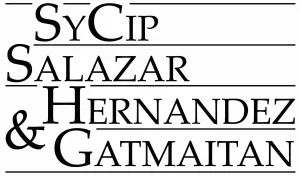- within Corporate/Commercial Law and Environment topic(s)
- with readers working within the Media & Information industries
Republic Act No. 12234, commonly known as the Konektadong Pinoy Act (KPA) lapsed into law on August 24, 2025. Its implementing rules and regulations were signed on November 5, 2025 and will come into force 15 days from publication.
The law establishes a new regime for the local telecommunications industry and creates a new player – the data transmission industry participant (DTIP). Data transmission refers to the process of sending and receiving digital or digitized analog signals over a communication medium to one or more computing networks, communication or electronic devices.
The regulatory sea change is that while previously, any services involving connectivity or operating a network required a congressional franchise and a certificate of public convenience and necessity (CPCN) from the National Telecommunications Commission (NTC), the KPA has effectively removed these requirements except for basic telephone services such as landline and mobile phone offerings.
Under KPA, an entity can offer connectivity, and generally need only to register with the NTC as a DTIP.
In practical terms, the new law appears to allow providers such as those offering value added services (VAS) to establish their own networks without having to contract with existing local network operators or in the alternative pursue the more time-consuming and effortful option of obtaining their own franchises and CPCNs.
The KPA is the latest in a series of legal developments that have been seen as opening up the local telecommunications industry: with the acceptance of passive infrastructure operation, specifically, that of tower assets, being confirmed as a non-telecoms business, sometime in 2020, and the relaxation of nationality restrictions applicable to telecoms as well as the non-telecoms characterization of VAS under the 2022 amendment of the Public Service Act.
The IRR
The KPA's implementing rules and regulations (IRR) were issued by the Department of Information and Communications Technology (DICT) on November 5, 2025 ICT signed on November 5, 2025 and will become effective after 15 days from their date of publication in a newspaper of general circulation.
General policies; data transmission industry segments — The IRR mirrors the open access, fair competition and technology neutrality policies set out in the KPA, and the push towards shared digital infrastructure. While the rules underscore the intent to remove barriers and facilitate registration of providers, they note the need for the NTC to still come up with various eligibility criteria and standards for participants in the data transmission segments: (a) international gateway facilities; (b) core or backbone network; (c) middle mile; (d) last mile; and (e) any other segment as may be defined by the DICT in a separate issuance.
Registration requirement — As noted in the KPA, DTIPs must register with the NTC. The validity of the certificate for last mile participants shall be up to five years, middle mile for up to ten years, and core or backbone network and international gateway facility for up to fifteen years, renewable for the same period. An applicant may request a shorter validity of not less than one year. A registry of all DTIPs is supposed to be published by the DICT and the NTC within three months from the IRR's effectivity.
Change in control — An interesting set of provisions in the new IRR are the change in control provisions. While NTC approval for transfers of licenses and change in control is not a new consideration, the definition of what a substantial change in control is, is notable. For instance, the following, among other transactions, expressly trigger the need for NTC approval: (i) any direct or indirect sale, transfer, or disposal of 20% or more of the voting shares or equity interest of the DTIP, whether in a single transaction or a series of related transactions within a twelve-month period, (ii) any transaction that results in a new entity, person, or group exercising the power to elect a majority of the board of directors or otherwise direct the management and policies of the DTIP., and (iii) assignment or transfer of a material portion of network assets that would impair the DTIP's ability to meet its service obligations.
There is a lot to unpack because of the KPA's and the IRR's broad regulatory footprint — from new cybersecurity requirements to transition issues — and issuances and guidance from the DICT and NTC should be monitored.
For additional discussion on the pre-IRR KPA, see "Dissecting the Konektadong Pinoy Law" by Rose Marie M. King-Dominguez, published in The Manila Times, August 29, 2025.
The content of this article is intended to provide a general guide to the subject matter. Specialist advice should be sought about your specific circumstances.

